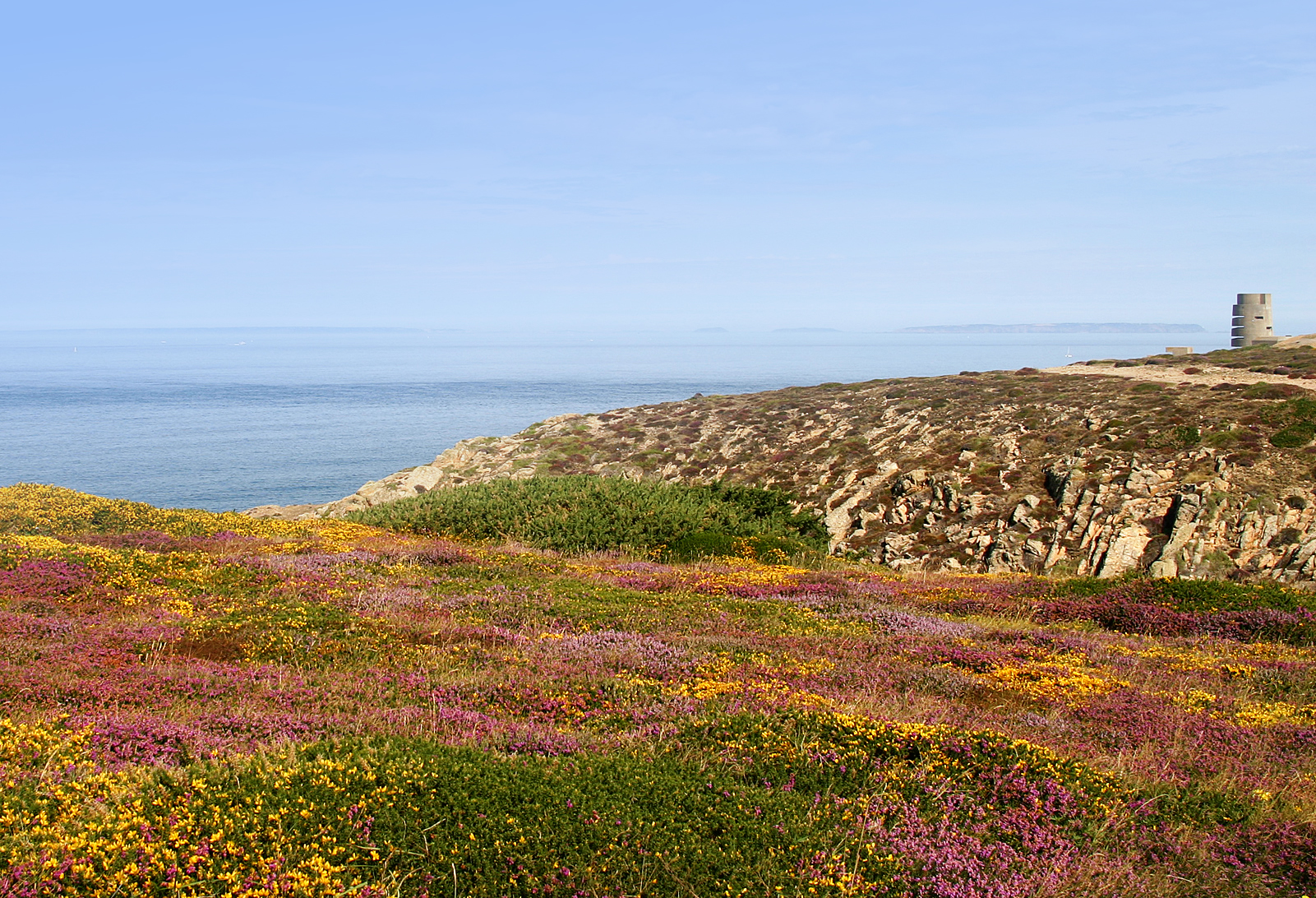By Liz Corry

A blog post about cute pigs?! Nah. I’m just throwing you off the scent. Click bait. It is the monthly chough report of course with everything that happened in September.
Scoping out the racecourse

The chough flock spent at lot of time in September foraging around Les Landes Racecourse. There appeared to be plenty of insects available in the soil. Leatherjackets (cranefly larvae) from the looks of things although viewing through a scope a some distance adds uncertainty.

We still have a fair few turn up at the supplemental feed. The noticeable difference is that they are taking less food. Instead of finding empty food dishes within an hour of food being put out we find leftover pellet. Presumably because they have eaten so well out and about in the mornings.
Our rodent-proof food stands mean we can leave the leftovers for the choughs to snack on later. Hunger should not be a problem for Jersey’s choughs this month!
Class of 2019 suffer another setback
Another dead juvenile has been found out on the north coast. The body was found by a dog walker near Devil’s Hole. The lady regularly visits Sorel and knew when we would be feeding so kindly handed over the remains. We identified the bird as PP042 who fledged this year in the quarry. Not a huge surprise as they were on the missing birds list.
The surprise was the condition of the bird…headless and, on X-ray, very broken. You can see shattered bone in the left humerus (circled red in the image below). Our vet was a bit baffled at the post-mortem. The injuries sustained are something he is more familiar with seeing from a bird that had been hit by a car. Plus we don’t know if all this happened after the bird died or before.

We do know this means there are only 11 juveniles remaining. Three of those have not been seen in a long time. If they are still unaccounted for in October we will have to assume the worse.
PP035 is one juvenile very much alive and kicking. She was caught up mid-September because one of her plastic rings was unraveling. Not an easy thing to do for a bird to do. It would have required force. The ring was replaced and this time a lot of glue was used to seal the overlapping edges. She looked in good health and was released straight away.
Where’s woolly?

The flock of sheep at Sorel were moved off site this month as part of their management plan.
There was, however, one little sheep who avoided the round-up. We found her merrily grazing away at the aviary. She had pushed through the fencing and entered the hedgerow bank rather cunningly hiding in the hedgerow when the shepherd was around and reappearing at the chough feed.
With a bit a team work and a lot of patience she was eventually moved out (it gave our push-mower a bit of a break!).
After seven years of working out at Sorel it felt quite eerie to visit and have no sheep and no choughs*. You can still find the sheep in various locations around Jersey doing their bit for conservation grazing. Maybe it could become the next rewilding game #whereswoolly?
*don’t worry we haven’t removed the birds, they do that themselves by flying off during the day.
Flocking season in the Zoo
At this time of year, with breeding over, we normally move all the Zoo choughs back into one aviary. This mimics the flocking behaviour you see in choughs over winter. However, this year was a bit different.
This is the first year we have had only one breeding pair at Jersey Zoo. It is also the first year we haven’t released parent-reared chicks. So that means trying to mix a family of four with the only other chough we have – Gianna.

Normally the other choughs ignore Gianna, but with one family and an uninvited guest in their territory things are a little different. We have made three attempts to mix Gianna with the group this month. The first time we assumed tensions were high because the male in the family had only just been moved back. He had been housed separately for the past two months due to bad behaviour. We gave him some more time to settle in and calm down before the next attempt. No change. We waited again. Surely the hormones had settled? Nope.
As soon as I leave the aviary the pair fly over and shout loudly at Gianna. If I then walk away from Gianna, they dive-bomb her and it gets physical. Thankfully, Gianna is thick skinned and once I’m back inside with her she returns to preening and picking out insects.

Sadly for Gianna I can’t live in the aviary and be 24-hr bodyguard (although the rent would be free). She has been moved back to her off-show aviary and might have to stay in there over winter.
New placement student
If Gianna does have to stay off-show she will receive lots of attention because….fanfare please…we have a student placement again! After more than a year with a vacant position, Flavio has joined the project.
He is with us until March and has already got stuck in to the task at hand. As evident in the video below. Faceal sampling for health checks, camera trap reviews for roost ID, and dealing with a dead chough all in Week 1.
Flavio has previously worked on a beetle conservation project in the UK so we are hoping to put his survey skills to use in Jersey. His mode of transport is a bicycle so be sure to give him a wide berth if you are overtaking – he has an expensive scope in his bag. I wouldn’t want it damaged!
Wilder Islands
The annual Inter-Islands Environmental Meeting was held in Alderney this year hosted by the Alderney Wildlife Trust. With the theme of Wilder Islands, delegates attended a two day symposium highlighting work carried out across the Channel Islands, Isle of Man and islands of the British Overseas Territories. Birds On The Edge was represented by myself and Cristina Sellares with Glyn Young joining on the challenging third day.

The third day was a mixture of talks and working groups tackling the challenges islanders face with biodiversity and climate change. Tony Juniper gave the introductory keynote speech.
We were also treated to an evening lecture from Dr George McGavin the esteemed entomologist and patron of the Alderney Wildlife Trust.

A separate blog will be posted going into more detail. The highlights for this report include the mention we got in Jamie Marsh’s talk on the white-tailed sea eagle reintroduction in the Isle of Wight. Guess where we might be taking choughs next? And our first possible sighting of a Jersey chough visiting Sark! Suffice to say our holidays work plans for 2020 are quickly filling up.

Wilder Kent
Alderney Wildlife Trust was not the only Trust we were involved with this month. I attended further planning meetings this month for the Kentish Chough Partnership (KCP). This includes Kent Wildlife Trust, WildWood Trust, and the National Trust to name all the trusts. Also involved are Paradise Park, White Cliffs Countryside Partnership, and English Heritage. As you can imagine there are a lot of stakeholders with an invested interest in restoring Kent’s biodiveristy.

Building on the success of the Jersey choughs, can reintroduced choughs help restore Kent’s chalk grasslands? Could we eventually join the Cornish population and Kentish population to bring back this charismatic bird to England’s entire south coast as in days gone by? Ok, that last bit is jumping the gun. Although it is early days, the KCP are certainly working hard to make sure the first aim is achievable.
You can click the link here to read about Kent Wildlife Trust’s vision for a Wilder Kent.



